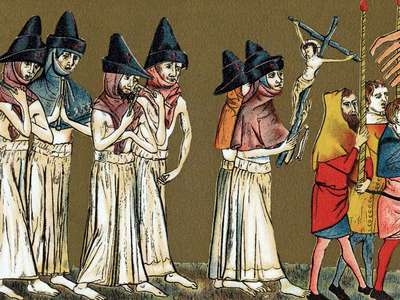
The Black Death was a plague that raged through Europe from 1347-1350. It was caused by fleas living on rats which were carried to Europe from Asia by Genoese trading ships. It is suggested that the Black Death was probably bubonic plague, that is to say the sufferers developed “buboes” or inflamed swellings.
About one in three Europeans died of the disease. The sudden decrease in population brought serious social problems. An acute labour shortage led to higher wages and there was short lived slump in trade. Many people became obsessed with the idea of death, for there were many recurrences of the plague, notably during the years 1361-3, 1369-71, 1374-5, 1390 and 1400.
On the other hand, the plague speeded changes that had already begun, changes which had their roots in growing trade and the increasing use of money. It became profitable to export wool and wheat. So land gained a new importance, and many nobles, who had lost labourers and were forced to pay much higher wages to those remaining, chose to sell their estates’ land to rich merchants. Thus arose a new class of land-owners where wealth counted as much as birth.
The population of Western Europe did not regain its pre-1348 level until the beginning of the 16th Century.
Picture Credit : Google




